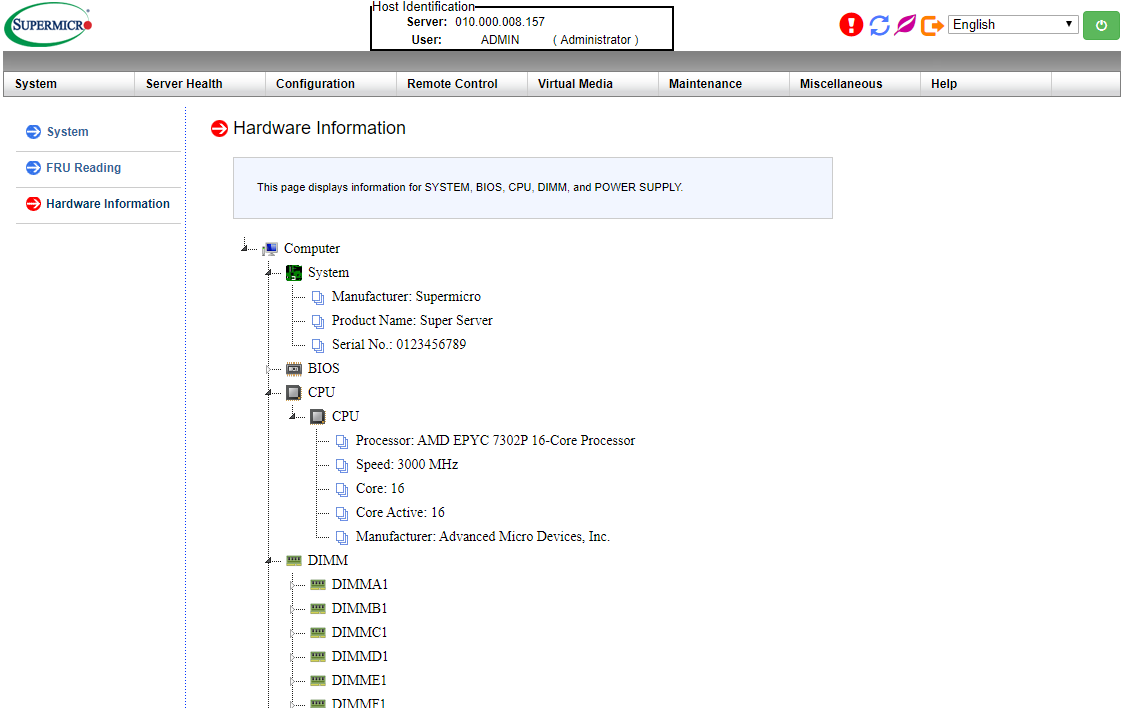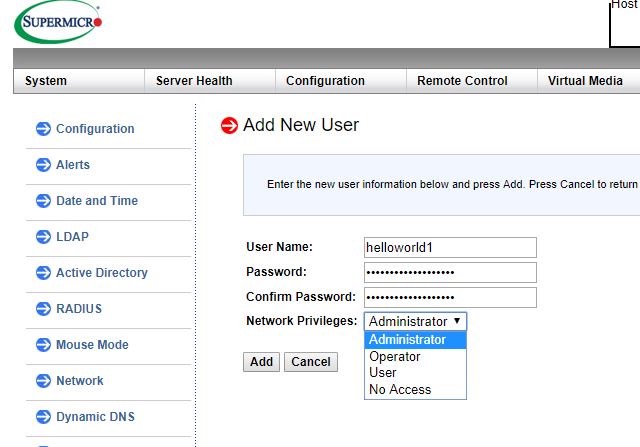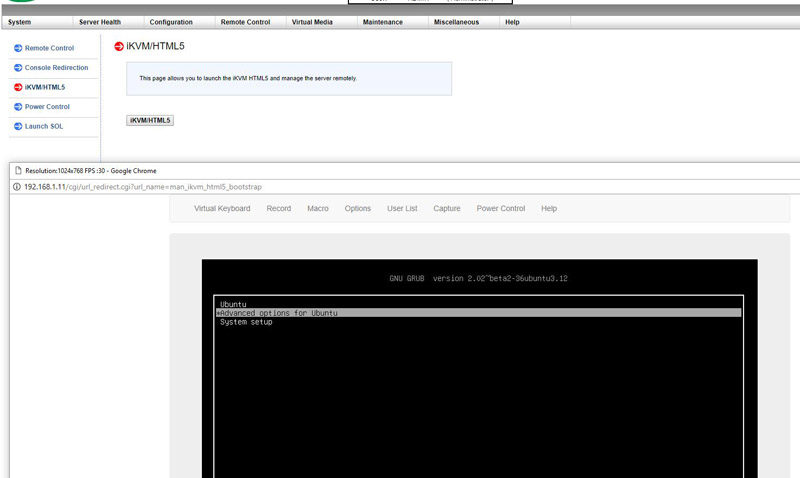Supermicro H11SSL-NC Rev 2 Management
These days, out of band management is a standard feature on servers. Supermicro offers an industry-standard solution for traditional management, including a WebGUI. This is based on the ASPEED AST2500 solution, a leader in the BMC field. The company is also supporting the Redfish management standard.

On this server, we see similar features as we would across the Supermicro X11/H12 ranges. That means whether you are using an embedded Intel motherboard or a 4U EPYC storage server, you will have a similar look and feel to the management experience.

In the latest generation of Supermicro IPMI is an HTML5 iKVM. One no longer needs to use a Java console to get remote KVM access to their server.

Currently, Supermicro allows users to utilize Serial-over-LAN, Java or HTML5 consoles from before a system is turned on, all the way into the OS. Other vendors such as HPE, Dell EMC, and Lenovo charge an additional license upgrade for this capability (among others with their higher license levels.) That is an extremely popular feature. One can also perform BIOS updates using the Web GUI but that feature does require a relatively low-cost license (around $20 street price.) That is a feature we wish Supermicro would include with their systems across product lines.
This pricing differential for a serviceable iKVM functionality is a big deal in this segment. Adding a $200 license to a server can add 10% or more in the embedded platform costs. Supermicro’s iKVM feature is extremely popular due to its inclusion with the server.
Supermicro H11SSL-NC Test Configuration
Here is the test configuration we used for the Supermicro H11SSL-NC:
- System: Supermicro H11SSL-NC
- CPUs: 7702P, 7502P, 7402P, 7352, 7302P, 7272, 7232P
- Memory: 8x Micron DDR4-3200 32GB RDIMMs (256GB total)
- Boot SSD: Toshiba 512GB XG3
- Storage HDDs: 4x 10GB Western Digital Red
- Networking: Mellanox ConnectX-5 VPI PCIe Gen4 (CX556A) 100GbE
Since this is a single socket, cost-optimized platform, we are focusing on the performance of “P” series parts along with a few additional data points. AMD sells “P” series SKUs that are specifically designed for platforms like this that operate only in single-socket mode but have significant discounts.
Next, we will look at performance.




Still very happy with our AsRockRack EPYCD8-2T boards.
4* 10gb wd red hdd? maybe 10tb?
Arrived two days ago! Today the Case was dropped by DPD. Tonigh i will start to move the system to the new board.
Would love to see how Epyc 7001 perform on this. Especially my 7551p…
Does the board support Bifurcation?
And is there any single socket EPYC or TR boards that have 7 full 16 slots? Render farm with this chip would be a nice build.
Is the board running with windows 10 pro or win10 enterprise?
what is the SD-Card slot for? I can’t seem to find anything in the manual?
I would avoid this thing. Have one. You CANNOT flash it to IT mode. Stuck with it in IR. Wrote Supermicro asking for some sort of documentation or assistance and basically got the cold shoulder. Very disappointing.
@jahn this is a server/workstation board, not something you’d run a client OS like win10 on. These boards typically are only qualified with RHEL/SLES/ESXi/WinSvrOS. Check Supermicro site for details. Not to say Win10 won’t work, but it’s not officially supported.
@William Robins…I have successfully flashed the onboard SAS on mine to IT mode. I used utility and firmware located at https://www.broadcom.com/products/storage/host-bus-adapters/sas-9300-8i#downloads. Specifically, I grabbed sas3flash.efi from Installer_P16_for_UEFI, and mpt3x64.rom, mptsas3.rom, and SAS9300_8i_IT.bin from 9300_8i_Package_P16_IR_IT_FW_BIOS_for_MSDOS_Windows. Both are listed under firmware on Broadcom’s site. Follow instructions posted by @EluRex here: https://forums.servethehome.com/index.php?threads/supermicro-onboard-lsi3008-from-ir-to-it-mode.19083/
Forgot to add that I’m currently running a 5 drive raid-z in a TrueNAS vm under ProxMox with the onboard SAS flashed to IT and passed through